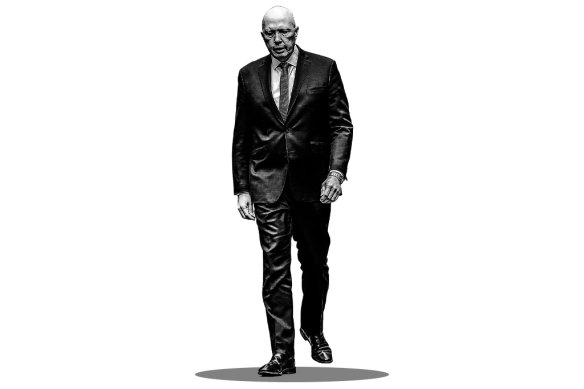This was published 1 year ago
Opinion
Morrison might not have held a hose, but Dutton doesn’t hold a policy
Peter Hartcher
Political and international editorHow would it look if you called a big protest rally but no protesters turned up? It would look a lot like the weekend byelection for the federal parliamentary seat of Dunkley.
After 21 months of complaining and catastrophising, fuming and foaming about the Albanese government, the Liberal Party told us to expect a mighty protest vote.
And it’s true that it was the perfect set-up for one. It was held amid a painful cost surge and a tripling of mortgage interest rates. In a seat that rejected the Voice. An electorate that feels overlooked, on the furthest fringes of a big city.

Credit: Artwork: Marija Ercegovac
It was the ideal opportunity to do what Peter Dutton had urged: “Send Anthony Albanese a message that he needs to do a better job in addressing the cost-of-living crisis.”
Or to send the message that his deputy, Sussan Ley, had promoted for people in the electorate who have “a problem with Victorian women being assaulted by foreign criminals” – they should “vote against Labor”.
And it was a free kick – voters could kick Labor out of the seat without changing the party in power. Albanese would still have a majority in the House with or without Dunkley.
But, in the event, no one protested. Labor’s primary vote did not suffer at all. On the contrary, it was actually a touch higher than at the 2022 election. By late afternoon on Sunday, it was almost 1 percentage point higher, at 41.15 per cent.
But wasn’t there a swing to the Liberals? Yes, there was, but it didn’t come at Labor’s expense. The Liberal primary vote was 39 per cent, up by 6.6 per cent. But Labor hadn’t lost a vote, so where did these extra Liberal votes come from?
It appears that the Liberals profited from the absence of two of the fringe right-wing populist parties. Clive Palmer’s United Australia garnered 5 per cent and Pauline Hanson’s One Nation almost 3 per cent at the last election, but both parties decided to sit this one out. They are likely to be back at the next general election.
In other words, all the Liberals managed to do was to rearrange the right-wing vote temporarily without laying a glove on Labor.
The net effect in the two-party preferred count was a swing to the Liberals of 3.5 per cent. Labor held the seat by 52.7 per cent to the Liberals’ 47.3. That’s closely in line with the national vote at the 2022 election.
For perspective, it’s a seat that the Liberals held for 24 of the past 27 years. It was a campaign where they probably spent $1 million, boosted by a further $300,000 worth of anti-Labor campaigning by Advance Australia. And, in the midst of a living costs squeeze, the Liberals really should have done better.
Why didn’t they? The people of Dunkley, whose demographics generally fit the median for middle Australia, perhaps absolved Albanese from any culpability for their problems. Maybe they gave him some credit for trying to address the problem. As a Labor strategist says: “They don’t think we’re perfect, but they can see we’re trying.”
Or, if they thought Albanese to be the problem, they didn’t reckon Dutton to be the solution. One clue is that Dutton failed to appear in the electorate on polling day, a telltale sign that he’s not an electoral asset.
But how could they see the Liberals as an improvement? The Liberal Party has no positive offerings. It has failed to renovate its policy set since losing power. Scott Morrison might not have held a hose, but Dutton, so far, doesn’t hold a policy.
Some senior Liberals acknowledge this to be a major deficiency. But this is eminently fixable. As one says: “That’s in our hands.”
Complaining and ranting isn’t enough. The next time the Liberals call a big protest, presumably at next year’s federal election, they’ll need to offer some solutions.
Cut through the noise of federal politics with news, views and expert analysis. Subscribers can sign up to our weekly Inside Politics newsletter.